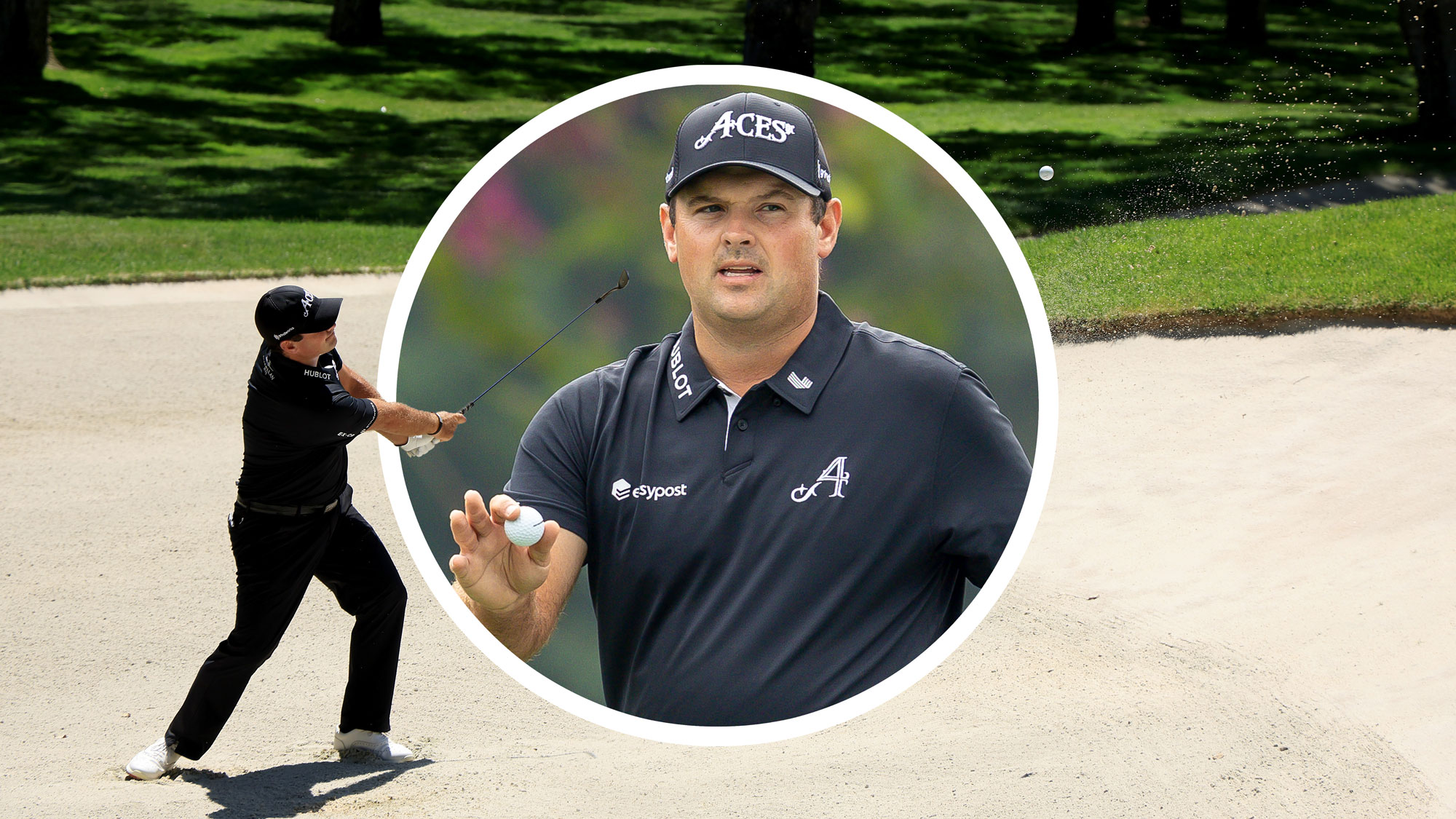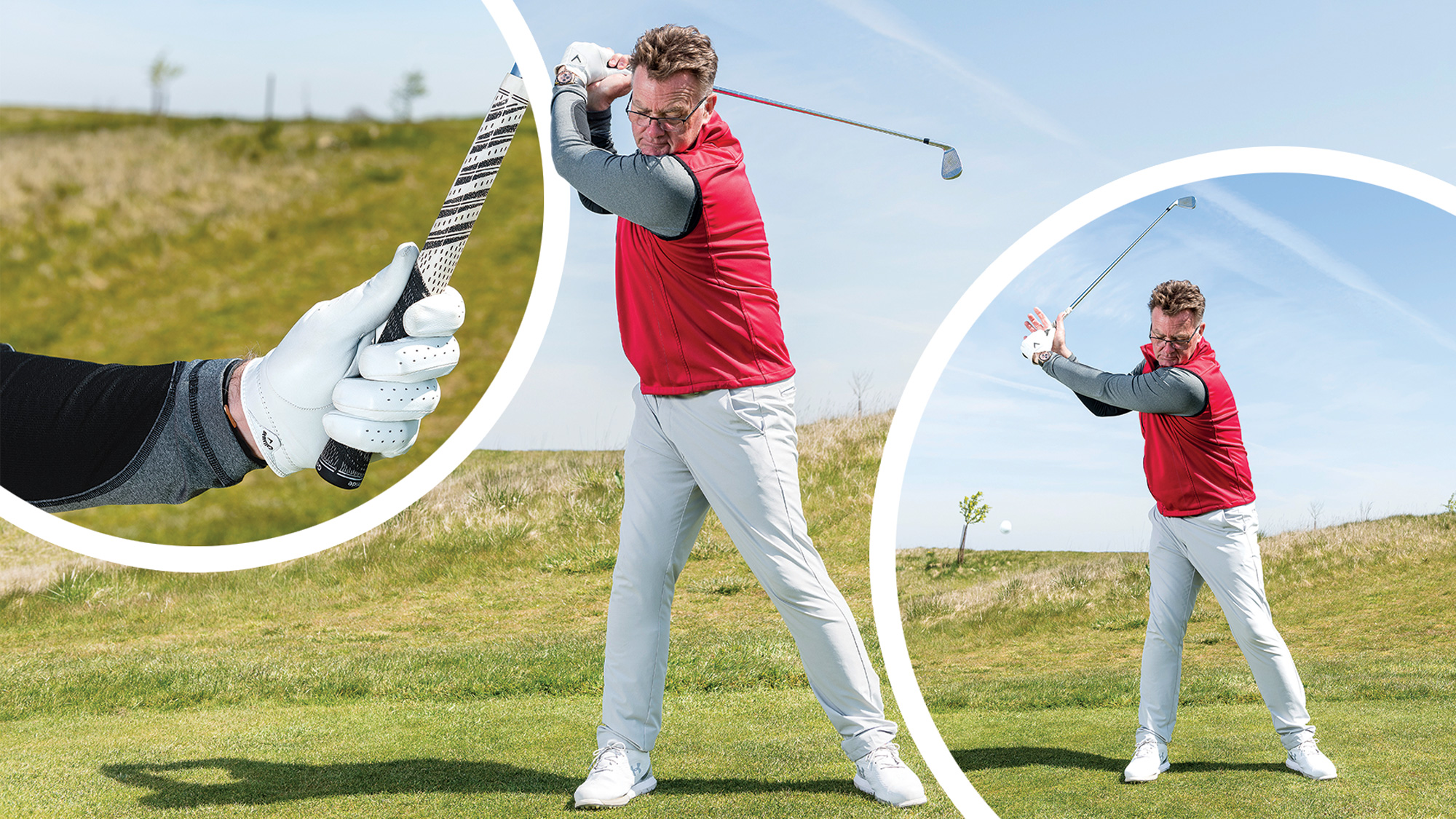'I Grew Up Missing Every Green On The Planet... So It Became A Necessity To Become Good At Chipping' – 5 Expert Short Game Tips From The 2018 Masters Champion
Patrick Reed is renowned for being one of the best short game players of his era, with his silky touch around the green helping him to win a first Green Jacket


Barry Plummer
When I think of Patrick Reed, two things come to mind... winning the Masters in 2018 and the American's stellar short game. In fact, if you consult the Data Golf all-time Strokes Gained data, Patrick Reed ranks 10th in the around the green category, just one place behind World No.1 Scottie Scheffler.
With a myriad of professional wins to his name, all over the world and on multiple top-level tours, Patrick Reed is the perfect person to ask about how to improve your short game.
So, in the interest of getting you in better shape around the greens, we asked Reed to share his five top tips...
Patrick Reed Short Game School

Since turning pro in 2011, Patrick Reed has secured 10 professional wins worldwide – including a first Green Jacket at The Masters in 2018. Now playing on LIV Golf, Reed has ranked in the top-3 for scrambling in each of the last two seasons, further highlighting his expert short game prowess.
1. Chip Shots
I grew up missing every green on the planet and every fairway so it became a necessity to become good at chipping. It’s all about getting the creative side of my game working. I like to look at a chip and visualise different types of shots I can play.
When you have a chip in front of you, obviously you’ve put yourself in a position – whether through a poor tee shot or iron shot – to need to recover. Chipping the ball really well, I can say from experience, saves rounds. It keeps momentum on your side if you birdied the previous hole. At the same time, a par when you’re in a bad spot will help you keep the round going.
You’re not going to be able to pure it with your full shots every round, so it always helps when you have a good short game to lean on. If you’re playing really well on a given day, you can use chipping as a way to keep your round intact, and you can tell yourself that there’s no place on the course that will throw you off your game.
Get the Golf Monthly Newsletter
Subscribe to the Golf Monthly newsletter to stay up to date with all the latest tour news, equipment news, reviews, head-to-heads and buyer’s guides from our team of experienced experts.
Being able to say that is a big deal and it does wonders for your confidence. I tend to draw my chips – it’s just something I’ve got comfortable with over the years. I know the majority of pros cut them, but I like to draw them.
2. Bunker Shots
The biggest thing for me is just really good practice. Bunker play boils down to knowing the lie you have and making sure you have good contact and the right kind of strike. The only way you’re going to be able to do that consistently is practice, practice, practice. I like to hit a lot of partial shots and, with bunker play, you’re trying to accelerate through impact and finish full, from a partial takeaway.
The thing about golf that makes it so hard is that there’s no substitute for practice. In the end, it’s just you out there and you can’t sugarcoat anything. Any weaknesses and any things you haven’t practised are going to show in your score or stats.
A post shared by Golf Monthly (@golfmonthly)
A photo posted by on
3. Lag Putting
Lag putting is all about repetition. Hitting your putts and knowing how far you have to hit it when you’ve got 45ft, 55ft. It’s all about rhythm and training your hands and arms to do that stroke over and over again. And let yourself feel free as you stroke those longer putts. You want to feel loose and not tense when you’re trying to cosy it up close from long distance.
4. Pressure Putts
For me, making pressure putts has always been about keeping everything within my routine. Whenever you’re under a lot of pressure, obviously your heart rate goes up and the easiest way to bring your heart rate down and keep it level is to have the same routine. That is whether you’re hitting your first putt of a round, practising on the putting green or on the 72nd hole trying to win at Augusta.
When you do the same routine over and over again, your body gets used to that and then gets in a normal rhythm. That then makes it easier for your hands to be more relaxed over those pressure putts so you can deliver when it matters most.

5. Hit More Greens
The biggest thing is knowing your distances – how far your shots carry through the bag. It’s not about knowing how far the ball rolls out to – the carry distance is what is going to keep you out of trouble. You’ll have some courses where it rains and gets very soft, and others where it’s firm and the ball is going to land and roll.
The biggest thing I encourage you amateurs to do is to get a good understanding of your carry distances with your irons, especially down to the wedges, as that will help you be aggressive and attack shots more out there.

Garrett Johnston is a golf reporter and presenter who’s covered pro golf for 12 years including over 30 majors. His goal each year is always to “grow with the rookies” on Tour. The idea is to get to know the superstars before they become household names. Tony Finau, Gary Woodland, and Patrick Reed are just some of the players Johnston has covered from their early pro careers for their hometown newspapers. Johnston’s favorite event is always The Open, and he credits his unforgettable experience covering the 2015 Open at St. Andrews where he got to interview Tom Watson (in his final Open) and winner Zach Johnson exclusively throughout the week as his favorite event so far. Johnston has also developed a strong rapport with Tour caddies and regularly contributes to Caddie Network and Golf.com. He also has his own podcast: Beyond The Clubhouse
- Barry PlummerStaff Writer
-
 How Many LIV Golfers Have Qualified For the PGA Championship?
How Many LIV Golfers Have Qualified For the PGA Championship?Phil Mickelson and Brooks Koepka are just two of 13 players from LIV Golf who will be able to tee it up at the PGA Championship at Quail Hollow
By Paul Higham
-
 Amanda Blumenherst Facts: 14 Things You Didn't Know About The Golf Channel Analyst
Amanda Blumenherst Facts: 14 Things You Didn't Know About The Golf Channel AnalystDiscover more about former professional and Golf Channel analyst, Amanda Blumenherst via these facts regarding her life and career to date...
By Jonny Leighfield
-
 Thomas Bjorn Shares An Invaluable Scoring Tip He Learned From Tiger Woods
Thomas Bjorn Shares An Invaluable Scoring Tip He Learned From Tiger WoodsThomas Bjorn shares a superb tee to green masterclass, including some invaluable scoring advice from Tiger Woods, in a bid to help you improve on the course
By Barry Plummer
-
 I Had No Idea It Was This Easy To Hit Draws And Fades... You Have To Try This Foolproof Formula Now
I Had No Idea It Was This Easy To Hit Draws And Fades... You Have To Try This Foolproof Formula NowWhen Top 50 Coach Alex Elliott shared this simple formula with me, I could not believe how easy it was to draw and fade the golf ball... you have to try it!
By Barry Plummer
-
 Sandy Lyle Shared 3 Top Tips With Us Prior To Winning The Masters in 1988... And They Could Still Save You Shots 37 Years Later
Sandy Lyle Shared 3 Top Tips With Us Prior To Winning The Masters in 1988... And They Could Still Save You Shots 37 Years LaterThe 1988 Masters Champion shared his expert tips in the January 1988 issue of Golf Monthly, but they are still absolute gems for amateur golfers to this day...
By Barry Plummer
-
 Are You More Accurate Than The Average Amateur Golfer? Peter Finch Can Help You Hit More Fairways In 2025
Are You More Accurate Than The Average Amateur Golfer? Peter Finch Can Help You Hit More Fairways In 2025There is no better feeling than striping one down the middle of the fairway, but many amateurs struggle with accuracy. Peter Finch has four pro tips to help...
By Barry Plummer
-
 Are You A Victim Of This Destructive Golf Swing Fault? Let Me Help You Fix It Before You Tee It Up This Weekend
Are You A Victim Of This Destructive Golf Swing Fault? Let Me Help You Fix It Before You Tee It Up This WeekendAn overswing in golf is a destructive habit which can cost us precious shots on the golf course, but PGA Pro John Jacobs has a quick fix to get us game ready...
By Barry Plummer
-
 Do You Struggle With Distance Off The Tee? Try This Quick Fix To Make 2025 Your Biggest Golf Season Yet
Do You Struggle With Distance Off The Tee? Try This Quick Fix To Make 2025 Your Biggest Golf Season YetStruggling with distance off the tee could be a major reason why your handicap isn't coming down or your scores aren't improving, but our quick fix can help...
By Barry Plummer
-
 Seve's 'Lost' Bunker Lesson: Master Slopes And Transform Your Short Game Today
Seve's 'Lost' Bunker Lesson: Master Slopes And Transform Your Short Game TodaySeve's forgotten bunker lesson, from Golf Monthly's August 1983 issue, could hold the secret to better bunker play and supercharging your short game this season
By Barry Plummer
-
 Is Your Golf Swing Failing You? This All-Encompassing Drill Can Instantly Save It
Is Your Golf Swing Failing You? This All-Encompassing Drill Can Instantly Save ItAre you struggling with your golf swing? Discover the all-encompassing drill that can fix common swing faults and restore your game. Get back on track today!
By Tom Motley